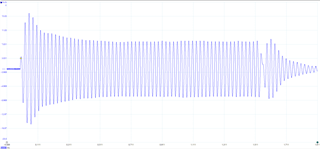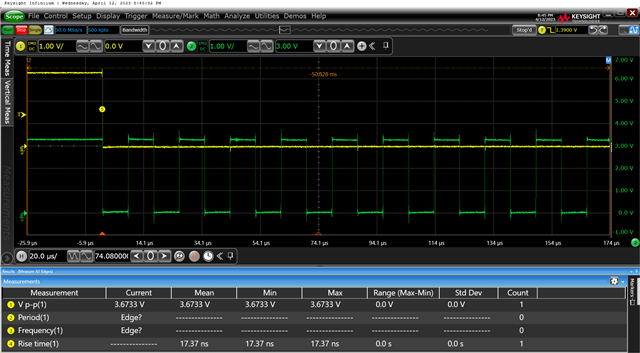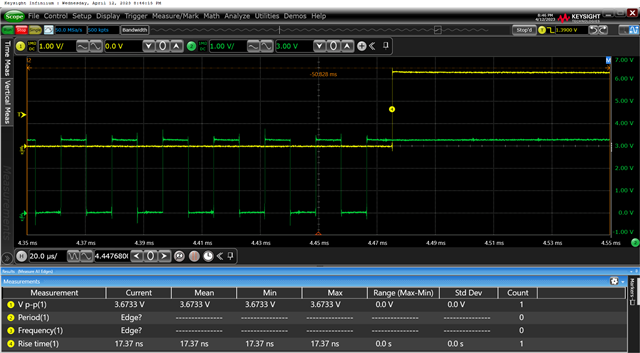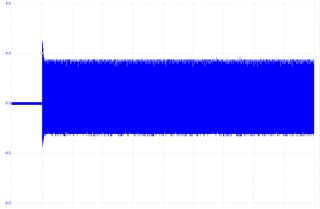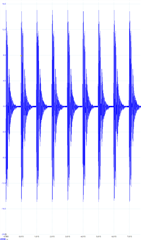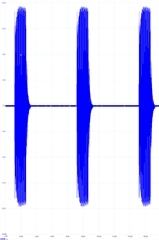Hello,
According to the datasheet, when the IO_mode is configured IO mode 0 and 1,the pulsed numbers are defined by the BURST_PULSE.

For example, if BURST_PULSE is configured 0X3F, it could send 63 pulses.
And the datasheet also describes that for IO mode 1and 0, if the BURST_PULSE=0, it could generate continuous burst pulses. But actually, when BURST_PULSE=0, it couldn't send pulse, and the PULSE_NUM_FLT status is set to 1. Please help to confirm if BURST_PULSE=0 could generate continuous burst pulses.

Best regards
Kailyn


